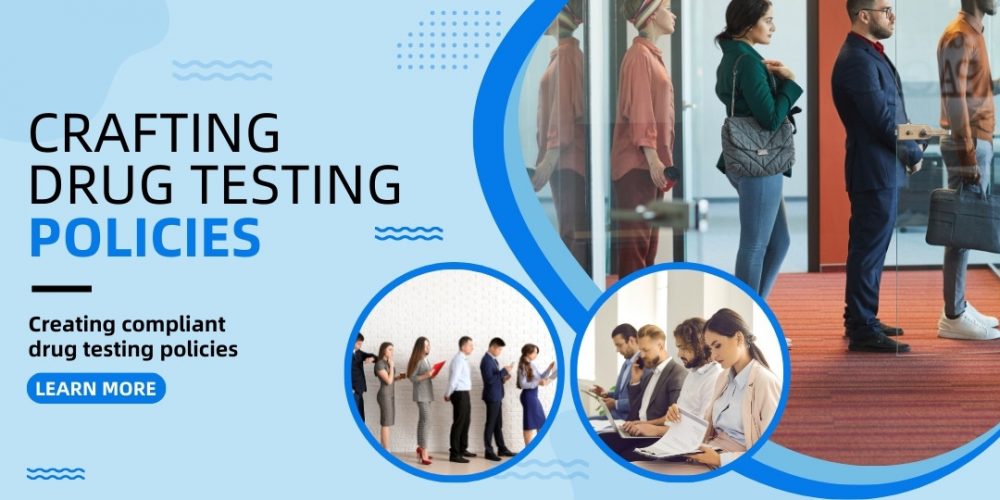

Developing a drug testing policy that complies with laws, regulations, and industry standards is crucial for organizations to maintain a safe and productive work environment. This guide will walk you through the key steps to ensure your drug testing policies are effective, fair, and legally compliant.
The first step in creating a compliant drug testing policy is to understand the relevant legal requirements. These can vary based on:
Consult with legal counsel to understand the specific legal landscape your organization operates within.
Different industries have unique standards and best practices for drug testing. For instance:
Research industry-specific guidelines and incorporate them into your policy to ensure compliance and best practices.
Insurance providers often have requirements for drug testing policies as part of their coverage conditions. Review your organization’s insurance policies to:
Clearly define the scope and objectives of your drug testing policy. Consider the following:
Ensure that these definitions align with legal requirements and industry standards.
Develop clear procedures for implementing the drug testing policy. This should include:
Training and education are critical for the successful implementation of a drug testing policy. Provide training sessions for:
Laws, regulations, and industry standards can change over time. Regularly review and update your drug testing policy to ensure ongoing compliance. Consider:
In the healthcare industry, ensuring a drug-free workplace is crucial for patient safety and care quality. A healthcare organization should start by understanding federal regulations, such as those from the Department of Health and Human Services (HHS) and the Drug-Free Workplace Act, which mandate specific drug testing protocols for healthcare providers. Additionally, state laws will dictate further requirements, including permissible testing methods and employee privacy rights. The organization should consult with legal counsel to navigate these regulations, ensuring that their policies are comprehensive and compliant. This includes reviewing insurance policies to meet coverage conditions, such as mandatory pre-employment and random testing for clinical staff. Once the legal framework is established, the organization should define the scope of testing, such as focusing on employees in patient care roles, and detail the types of substances tested (e.g., opioids, benzodiazepines). Clear procedures for sample collection, confidentiality, and handling positive results must be outlined. To promote the policies internally, the organization should conduct training sessions for supervisors on recognizing substance abuse signs and implementing the policy, while educating employees on their rights, the testing process, and the support available through Employee Assistance Programs. Regular reviews and updates, based on feedback and changes in regulations, will ensure the policy remains effective and compliant.
Creating a drug testing policy that is compliant with applicable laws, regulations, and standards requires a thorough understanding of the legal landscape, alignment with industry best practices, and clear procedures. By following these steps, your organization can develop a fair, effective, and legally sound drug testing policy that promotes a safe and productive work environment. Regular reviews and updates will ensure that your policy remains relevant and compliant with evolving requirements.